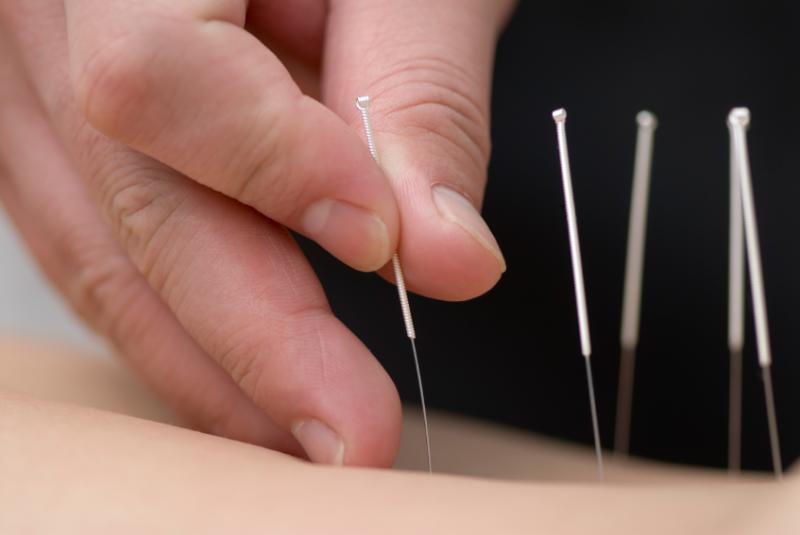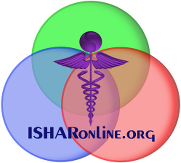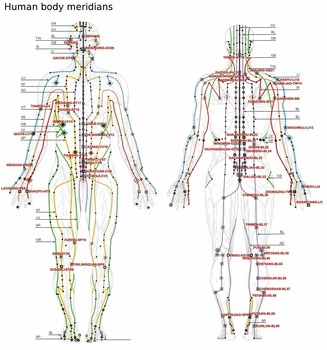Acupuncture
Go to ISHAR Online Source List: Acupuncture

Functional Summary
Modality |
|
Needle insertion & manipulation (alternatively with heat, pressure, electricity or lasers), often in combination with moxibustion and cupping therapy along meridians. |
Intention |
|
Traditional: Restoring balance (yin/yang) of energy flow (qi, or chi). Western: Releasing pain-blocking adenosine, endogenous opioids, stimulation of peripheral and central neural circuits |
Geo-Cultural |
|
Traditional Chinese Medicine (TCM), increasingly adapted & modified by cosmopolitan Western cultures. |
Definition
Acupuncture [literally ‘to puncture with a needle’, from the Latin acus (needle) and punctura (puncture)] is a “traditional” medical treatment modality originally evolving within the framework of Traditional Chinese Medicine (see entry) for at least 2000 to 4000 years (first codified in written form in the Yellow Emperor’s Inner Classic, or Huang Di Nei Jing, within the first century BCE) and more recently within the context of Contemporary Cosmopolitan Medicine (see entry), and involves the insertion of thin needles into specially designated points (acupoints) of the body, points which are posited by the system as occurring along certain “energy channels” known as “meridians” (see Bioelectromagnetic Energy Phenomena entry). According to this system disorder, disease, and other forms of pathology are often in large part caused by disturbances of the balance (yin/yang) of energy flow (qi, or chi, in Western translation/usage), and that the insertion and manipulation (rotating, heating, application of external energy sources, other forms of manipulation) of these needles can restore energetic balance and thereby health. As with most large-scale systems of knowledge and praxis, there are multiple schools of thought, technique, and practice, which have emerged throughout the range of cultures that have been influenced by the Chinese culture.
Research Summary
Acupuncture, along with many forms of “Complementary and Alternative Medicine” (CAM, see entry), has been surrounded by controversy within the domain of the Western (and Cosmopolitan) medical, biological, and life sciences. From one important perspective, the dynamic process of seeking the resolution of these controversies, through the application of scientific and related reason-based (“meta-scientific”) methodologies, has proven healthy and produced progress in both (“east and west”) knowledge systems – particularly when the sides remain both open and critical (not often an easy balance to maintain!) To the point, the fundamental existence, veracity, and accessibility of the qi/meridian/yin-yang system has been challenged by Western science; contrary to some of the more rigid published claims, there clearly is scientific evidence supporting the existence of the Chinese energy system, as well as what should probably be regarded as homologous forms of energy systems of other cultures (see entry on Bioelectromagnetic Energy Phenomena). However, it is also clear that there are many more questions than answers in this realm of phenomena and their integrative study, and fortunately these subjects are under multiple streams of intensive investigation. And while these basic ontological and epistemological principles are enjoying a healthy, dynamic, scientific and philosophical process of dialectical scrutiny, it is nevertheless clear that acupuncture works – as with many successful medical treatments, for reasons that remain at least partially if not predominantly obscure – and is therefore qualified to join the ranks of successful evidence-based modalities (see entry). A recent (2012) authoritative medical reference work, Mosby’s – supported by a recent comprehensive literature review from Medline (2015) – provides the following list of disorders for which there is evidence that acupuncture is efficacious: “Acupuncture is highly effective in treating both acute and chronic pain associated with multiple causes. In addition, common conditions are effectively treated, including sinusitis, allergies, tinnitus, sore throats, hypertension, gastroesophageal reflux, hyperacidity and peptic ulcer disease, constipation, diarrhea, spastic colon, urinary incontinence, urinary tract infection, premenstrual syndrome, infertility, dysmenorrhea, memory problems, sensory disturbances, depression, anxiety, and other psychological disorders” (Acupuncture. (2012). In Mosby's dictionary of medicine, Nursing & Health Professions).
As already at least implied above, the full understanding of the mechanisms of efficacy remain a subject of debate and controversy, although there is scientific evidence that acupuncture works at least in part through the stimulation of biochemical pathways involving adenosine and endogenous opioids (not only “endorphins,” but enkephalins and other endogenous opioid substances), and also mechanical and metabolic stimulation of peripheral and central neural circuits. These mechanisms may be overlapping, synergistic, “redundant,” or independent, depending on the disorder and other variables.
Perspectives
ISHAR strives to present all of our data in an impartial, informative manner. Nonetheless, there are always different viewpoints on various topics, and ISHAR encourages users to review the perspectives on other informational sites, then come to their own conclusions regarding what they consider the least biased. The sites below were chosen to represent a wide spectrum of approaches to this topic, and none are endorsed or promoted by ISHAR itself.

